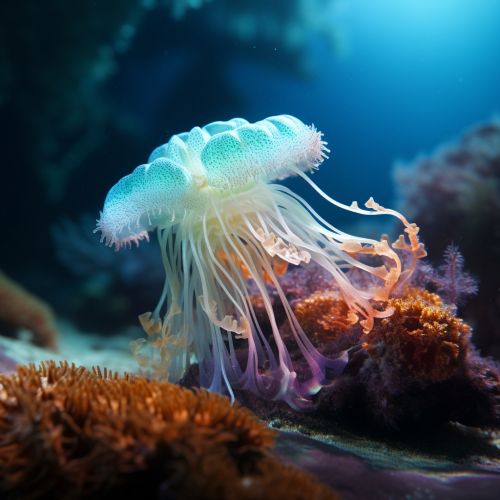The Evolution of Sensory Systems in Marine Invertebrates
Introduction
The evolution of sensory systems in marine invertebrates is a complex and fascinating topic, encompassing a wide range of species and sensory modalities. This article will delve into the intricate details of how these systems have evolved over time, focusing on the various adaptations and mechanisms that have allowed marine invertebrates to thrive in their aquatic environments.
Evolution of Sensory Systems
The sensory systems of marine invertebrates have evolved to meet the specific needs of their environment. The vast majority of marine invertebrates rely on a combination of chemoreception, mechanoreception, photoreception, and electroreception to navigate their surroundings and interact with each other.
Chemoreception


Chemoreception, the ability to detect chemical stimuli in the environment, is a common sensory modality in marine invertebrates. This sensory system has evolved to detect a wide range of chemical cues, from the presence of food or predators to changes in water chemistry. For example, many species of cnidarians and mollusks use chemoreception to detect the presence of prey or mates.
Mechanoreception
Mechanoreception, the ability to detect physical changes in the environment, is another critical sensory system in marine invertebrates. This system allows these organisms to sense changes in water pressure, currents, and vibrations, which can indicate the presence of predators or changes in environmental conditions. For example, echinoderms and arthropods have highly developed mechanoreceptive systems.
Photoreception
Photoreception, the ability to detect light, is a crucial sensory system for many marine invertebrates. This system has evolved in a variety of ways, from simple light-sensitive cells in some species to complex eyes in others. For example, many species of cephalopods have highly developed eyes that allow them to detect light and color, aiding in hunting and camouflage.
Electroreception
While less common than the other sensory systems, electroreception, the ability to detect electrical fields, is present in some marine invertebrates. This sensory system is particularly useful in murky or dark waters where visual cues may be limited. For example, some species of platyhelminthes and cnidarians possess this sensory modality.
Adaptive Mechanisms
Over time, marine invertebrates have developed a variety of adaptive mechanisms to enhance their sensory capabilities. These adaptations have allowed these organisms to thrive in a wide range of marine environments, from the deep sea to coastal waters.
Sensory Amplification
One common adaptive mechanism is sensory amplification, where the sensory systems of these organisms have evolved to detect even the slightest changes in their environment. This adaptation is particularly useful in the marine environment, where conditions can change rapidly.
Sensory Integration
Another important adaptive mechanism is sensory integration, where information from multiple sensory systems is combined to create a more complete understanding of the environment. This allows marine invertebrates to respond more effectively to changes in their environment.
Neural Plasticity
Neural plasticity, the ability of the nervous system to change and adapt, is another critical adaptive mechanism in marine invertebrates. This allows these organisms to adjust their sensory systems in response to changes in their environment or lifestyle.
Conclusion
The evolution of sensory systems in marine invertebrates is a complex and fascinating process, involving a wide range of adaptive mechanisms and sensory modalities. These systems have allowed these organisms to thrive in their aquatic environments, demonstrating the incredible adaptability and resilience of life on Earth.
